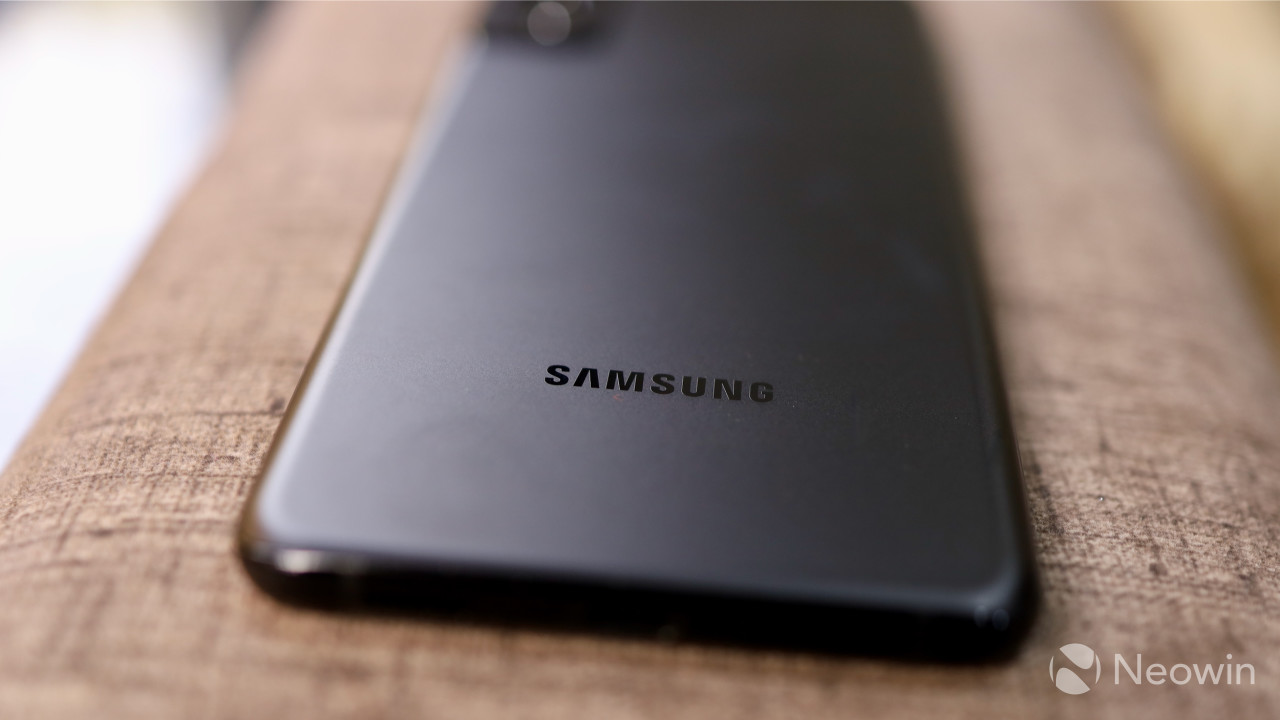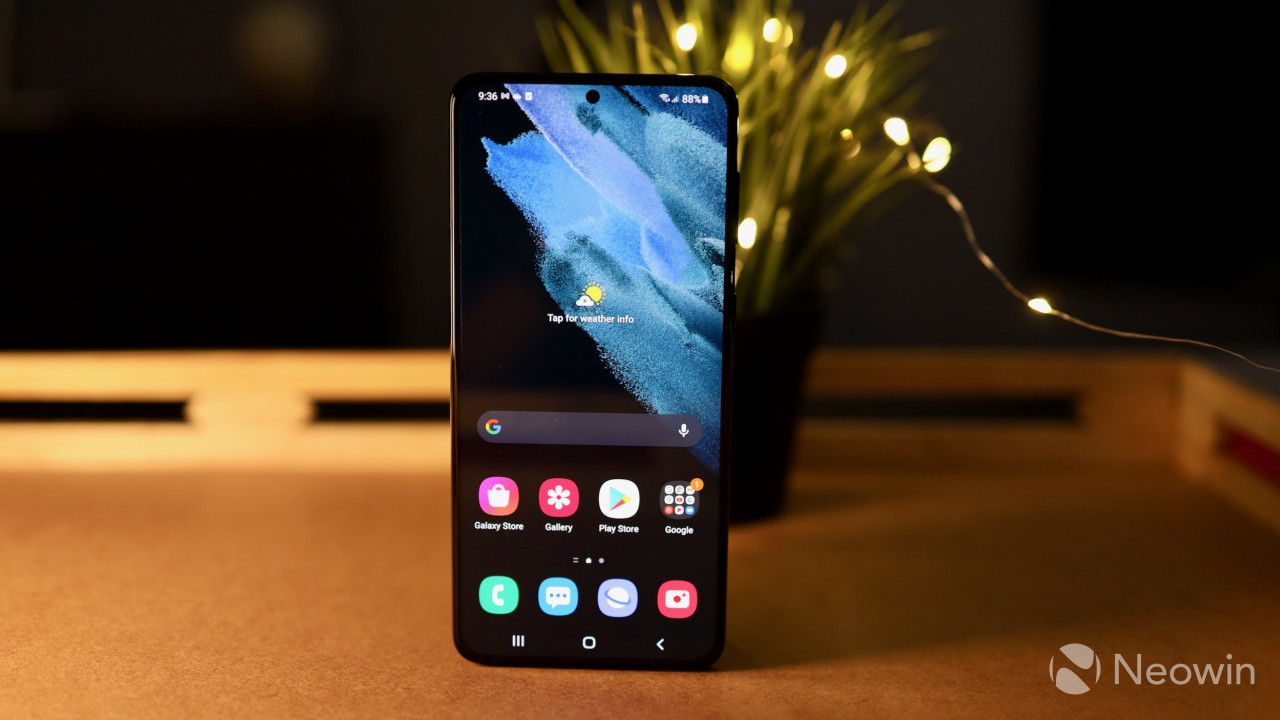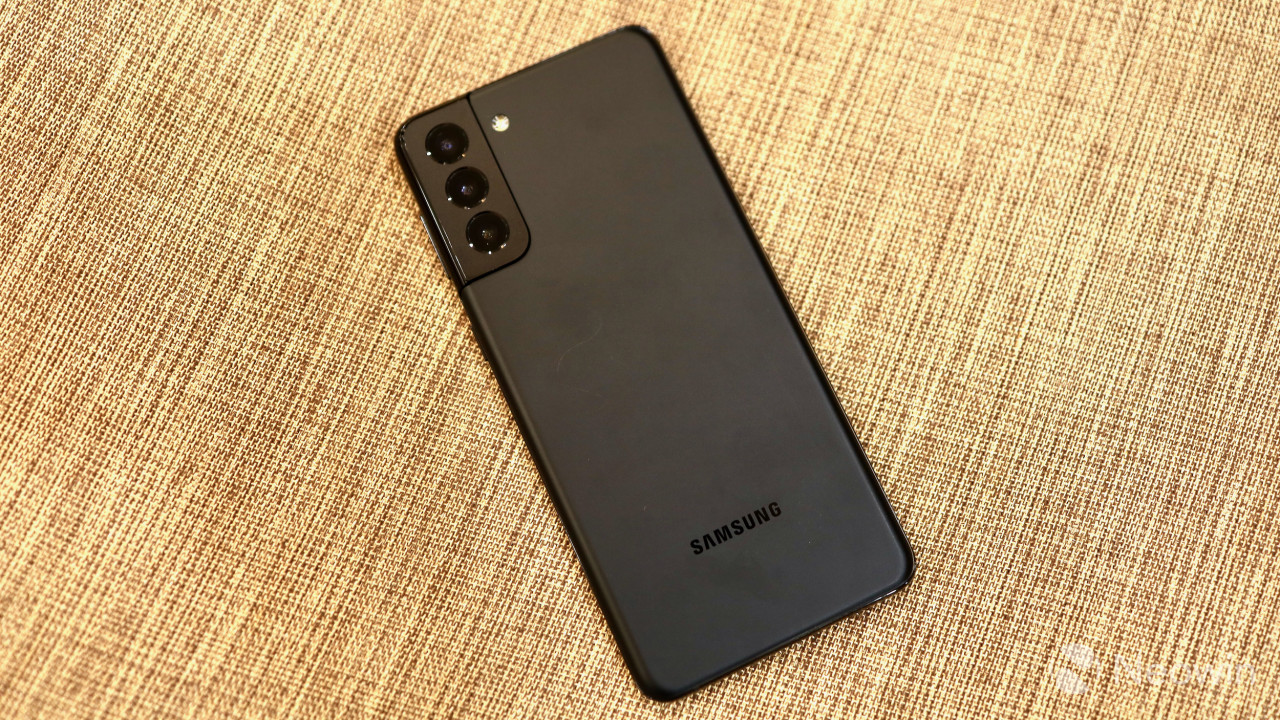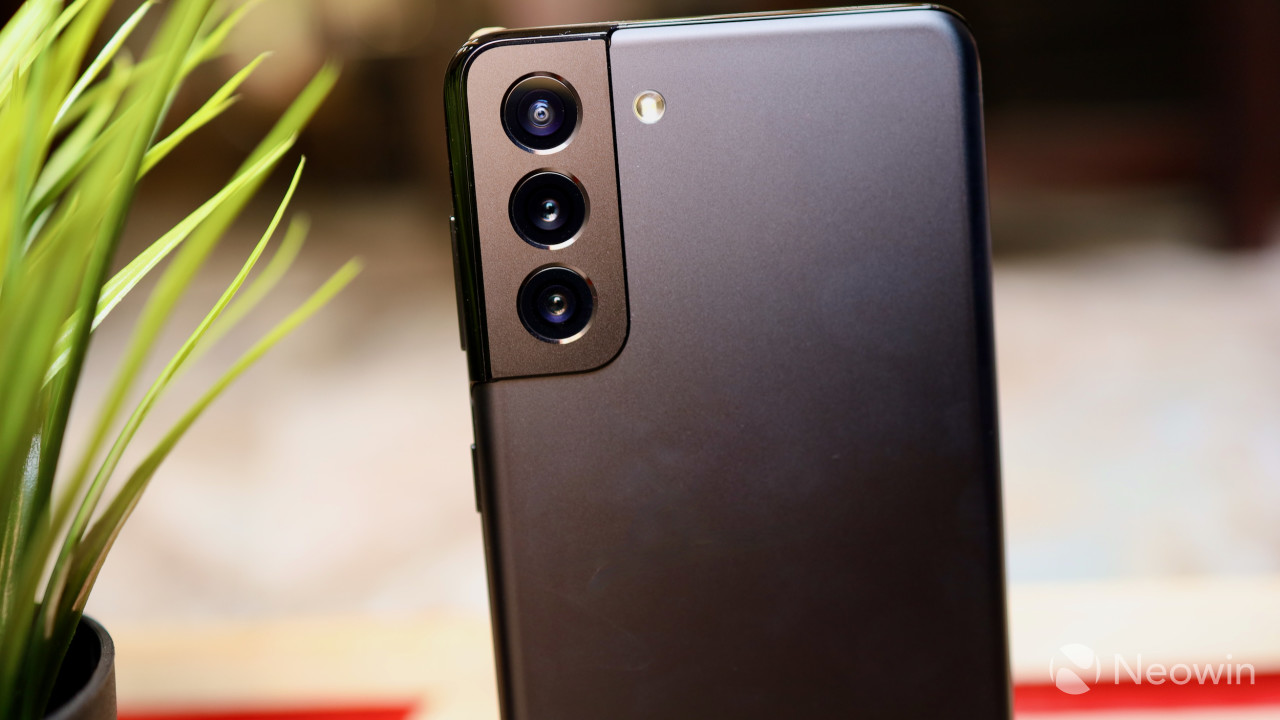The Galaxy S20 series was a disappointment for Samsung in many ways. It failed to deliver a flagship experience and the camera did not live up to expectations despite a major hardware refresh. This year, Samsung has launched the Galaxy S21 series earlier than usual and on paper, the lineup does not differ much from its predecessors.
The Galaxy S21+ is the middle child in the S21 series this year. In many ways, it is very similar to the Galaxy S20+ and in some areas, it is even a downgrade - no MST for Samsung Pay, a lower-resolution display, etc. So, is the Galaxy S21+ a dud just like the Galaxy S20+? Is this the case of old wine in a new bottle from Samsung? Find out in our review.
Specs
| CPU | Exynos 2100 (International) @ 2.9GHz, Snapdragon 888 (US) @ 2.84GHz |
|---|---|
| GPU | Mali-G78 MP14 (International), Adreno 660 (US) |
| Display | 6.7-inches, 1080x2400, 20:9, 394ppi, 120Hz dynamic refresh rate, Gorilla Glass Victus, Dynamic AMOLED 2x |
| Body | 161.5 x 75.6 x 7.8 mm, 200g, IP68 certified |
| Camera |
12MP f/1.8 OIS + 64MP f/2.0 OIS 1.1x optical zoom + 12MP f/2.2 ultra-wide, Front - 10MP f/2.2 |
| Video | 8K - 30fps, 4K - 60fps, HDR10+, Front - 4K - 60fps |
| Memory | 8/12GB |
| Storage | 128/256GB UFS 3.1 |
| Battery | 4,800mAh, 25W charging, 15W wireless charging, 4.5W reverse wireless charging |
| Other Features | In-display ultrasonic fingerprint scanner, Stereo speakers, IR blaster, IP68 certified |
| Connectivity |
Bluetooth 5.1 |
| Colors | Cobalt Blue, Shadow Gray |
| Price |
Rs 81,999 / $999 |
Samsung sells the Exynos 2100 variant of the Galaxy S21+ in my country so my experience will be based on that. There's also no 5G in India yet, so I cannot comment on the 5G speeds of the device.
Design
The Galaxy S21+ features an updated design language that helps it stand out from other premium glass slab phones. From the front, the phone is dominated by the 6.7-inch Gorilla Glass Victus cover glass, which also does duty at the rear. What's special about the Galaxy S21+ design is that the metal frame of the device itself extends to the rear to house the camera sensors. This further distingusihes the Galaxy S21+ from other phones in this category.
Samsung offers a two-tone finish to accentuate the new design. I like the new black color though, which has a matte finish and looks very stealthy. The power and volume rockers are located on the right edge of the device. The buttons are within easy reach and offer good tactile feedback. The USB-C port is located at the bottom, alongside the bottom-firing speaker. The Galaxy S21+ comes with stereo speakers, and the secondary speaker is located inside the earpiece grille at the top. For folks who want to use biometric authentication, there's an ultrasonic in-display fingerprint sensor included with the unit.
Samsung has been using an ultrasonic sensor on its flagship devices for a few years now. However, the S21+ uses a newer and bigger sensor from Qualcomm, which brings about a major usability difference. The bigger sensor area means there are fewer false unlock attempts. The unlock speed might not have increased, but the bigger sensor area makes up for it. This is one area where the Galaxy S21+ feels a major upgrade over the S20+. This might not seem like a big deal on paper but when you unlock your phone hundreds of times daily, the fingerprint sensor performance really matters and failed unlock attempts can get frustrating real fast.
I have not talked about the missing microSD card slot yet simply because I don't think it is relevant in this day and age anymore. With 128GB of base storage and Samsung charging only 50$ extra for the 256GB storage variant, the lack of a microSD card slot on the S21+ should not be a deal-breaker to anyone.
Display
On paper, the Galaxy S21+ 'only' comes with an FHD+ resolution 6.7-inch 120Hz Dynamic AMOLED display. The resolution is actually a downgrade from the Galaxy S20+ which has a QHD+ resolution display. Samsung did limit users to 60Hz refresh rate on the Galaxy S20+ at QHD resolution though. With the Galaxy S21+ featuring a lower-resolution display, there's no such issue here.
In real life though, that's not going to matter, as the display is extremely sharp irrespective of how closely you look at it. In every other aspect, the display on the S21+ is fantastic -- excellent brightness levels, great viewing angles, deep blacks, etc. After all, there's a reason why Samsung's OLED display panels dominate the smartphone market and they are used by all major OEMs.
Unlike the Galaxy S20+, the Galaxy S21+ features a flat cover glass with slightly smaller bezels. I have never really been a fan of curved displays as they usually lead to false touches during one-handed use or typing so I am glad about this 'downgrade' on the S21+. There's also Always-on Display support with Samsung offering plenty of customization options as well.
Thanks to the reduced resolution, the panel itself is more power-efficient, which helps with battery life. Additionally, the 120Hz refresh rate can dynamically drop down to as low as 48Hz, depending on the content being viewed to further reduce power consumption.
Performance and Battery Life
All the flagship Samsung smartphones I have used over the last few years have been powered by its in-house Exynos chipsets, that were not exactly known for their performance. After the disastrous Exynos 990 in the Galaxy S20 lineup from last year, Samsung has taken a different approach with the Exynos 2100 chip for 2021.
This latest chip uses a reference CPU design from Arm, in contrast to previous efforts when Samsung tried to design a CPU core on its own. The company has instead focused on improving the ISP and NPU of the chip for improved imaging and AI/ML performance. This approach is similar to what Qualcomm also does with its Snapdragon chipsets.
Looking past all that jargon, the difference that the Exynos 2100 brings to the table is clearly visible. For the first time in years, I am truly impressed by the performance of a flagship Samsung smartphone. It makes me realize just how bad previous Samsung phones were in this area. I have been using the Galaxy S21+ for over a week now, and I have never had the phone lag on me. This was regardless of which app or game I was using. I did face some random reboots and freezes while using some apps and games. The camera app also slowed down after a few hours of heavy use.
Given that the Galaxy S21 series has just gone on sale, I hope Samsung is able to resolve these issues with a future software update. The phone did get a bit warm when pushed hard but nothing that was too concerning. This again shows just how much of an improvement Samsung has made with its Exynos 2100 chipset. The Exynos 990 chipset inside the Galaxy S20+ used to heat up even when I was installing some big apps and games from the Play Store.
The combination of the more efficient display and the 5nm Exynos 2100 chipset, along with a bigger battery, means the Galaxy S21+ delivers great battery life. For the first time in years, I am using a flagship smartphone from the company that can last a day of heavy use without any worries. The part of the world where I live still does not have 5G, so your mileage may vary, but rest assured that the handset has enough endurance to last you a day. It also supports 25W fast wired charging and 15W wireless charging, so you can charge the phone in a jiffy.
Samsung does not bundle any USB-C power adapter with the Galaxy S21 series, citing environmental reasons. How much of that is true or not is up for debate, but the lack of a power adapter does affect the experience of using the device out of the box. Yes, most people buying the Galaxy S21 will have access to a power adapter, but they are unlikely to have a 25W USB-C power adapter that will fast-charge the device. When using the 25W USB-C charger, the Galaxy S21+ can charge from 0-100% in around 70 minutes. With a more traditional 18W brick, the device takes around an hour and 25 minutes.
There's also support for 4.5W reverse wireless charging which can come in handy to charge your Galaxy Buds or Galaxy Watch when you are traveling and forgot to carry the charger. I did not use the reverse wireless charging feature on a daily basis though as the entire implementation felt clunk and the user experience was not exactly great.
Camera
Samsung has reserved all the camera improvements for the Galaxy S21 Ultra this year, with the Galaxy S21+ featuring the camera setup of its predecessor: a 12MP f/1.8 primary shooter with 1.8um large pixels, 64MP telephoto camera, and a 12MP ultra-wide. Whatever improvements are there, they boil down to the improved processing and powerful ISP. I do wish Samsung would have used a bigger sensor for the ultra-wide angle camera as it would have helped in improving its quality.
The Galaxy S20+ was able to take some great photos and the Galaxy S21+ is no different. It is capable of taking some fantastic photos in various lighting conditions. The typical Samsung processing is clearly visible in photos, though I must say that the company is no longer overexposing its photos as much as before. There's a weird halo around objects in HDR scenes, which I expect will be fixed with a future software update.
Samsung's Night mode continues to be a mixed bag. It has definitely improved from the Galaxy S20+ as the Night mode photos on the Galaxy S21+ are a lot sharper. However, Samsung still tends to post-process its photos for social media and so they tend to brighten and overexpose them thereby sacrificing details in the process. This looks good on social media but if you pixel peep in the photos, you will see that they lack details.
The Night mode helps the ultra-wide angle camera in a big way in challenging situations allowing it to take at least usable photos in such cases. Night mode ultra-wide photos still lack the details, but they are sharper and the colors are much better. Also, don't bother using more than 3-5x zoom for photos as the image quality takes a big hit after that, especially if there's not enough light.
The front 10MP camera is the same as the Galaxy S20+, but Samsung has improved the processing. It now also offers an option to take 'Natural' selfies without all the skin smoothening effect -- a welcome change, I must say. This has a big effect. as it leads to the phone taking very sharp selfies.
As we're talking about the camera specifically, how about a more visual illustration of the words above? Check out some camera samples below.
Thanks to the more powerful ISP and improved CPU performance, the camera app on the Galaxy S21+ is smoother than previous Samsung flagships. This improves the camera app user experience in a big way. Switching between different camera modes is also smooth, and all that jank from the Exynos 990-powered Galaxy S20+ and Note20 Ultra is no longer there.
For the curious folks, there are plenty of camera modes to play around with. That said, apart from Night mode and Portrait mode, most of the other ones are gimmicky in nature. Pro mode is going to be useful for people who know the basics of photography and want full control over the various camera settings. There's also a Director View that will provide a live preview from all four cameras, though one can only record videos from any two cameras at a given time.
Software
The Galaxy S21+ runs on Android 11 with One UI 3.1 on top of it. Samsung has come a long way from its Touchwiz days, and with every new One UI iteration it takes a step in the right direction to further refine the user experience.
Visually, One UI 3.1 is pleasing to look at, and has great UX. It also has plenty of customization options, including the ability to theme the system, customize the Always-on Display, Lock screen clock, Link to Windows, DeX, and more. Be warned however that Samsung has buried all these options in the Settings menu. Depending on how you look at it, you'll find that these options are overwhelming or a welcome addition.
Another 'downgrade' from the Galax S20+ is the missing MST hardware on the Galaxy S21+ for Samsung Pay. This means that Samsung Pay will now only work with NFC-enabled payment terminals. While this might affect heavy Samsung Pay users, the feature never really took off like Apple Pay and Google Pay so I don't think it will bother many users.
One major improvement in One UI 3.1 is the ability to set the left-most home screen to the Google Discover page. This makes the default Samsung launcher much more usable for many power users who are used to that page.
Samsung has also upped its software update game and it is now at the forefront of rolling out major updates for its devices. Like the Galaxy S20 series, the Galaxy S21+ will also receive monthly security updates along with major Android OS updates for three years.
Conclusion
In terms of specifications, the Galaxy S21+ might look very similar to the Galaxy S20+ on paper. However, Samsung has enhanced the user experience in every way, and it shows. The Galaxy S21+ has a sense of refinement that the Galaxy S20+ simply lacked.
The firm might be heavily promoting the Galaxy S21 Ultra and its 108MP primary camera, but it is the Galaxy S21+ which is the star of the show for me. It is not too big, offers great performance and battery life, packs a competent camera setup, and offers all this at a pretty reasonable price tag for a flagship smartphone.













































13 Comments - Add comment